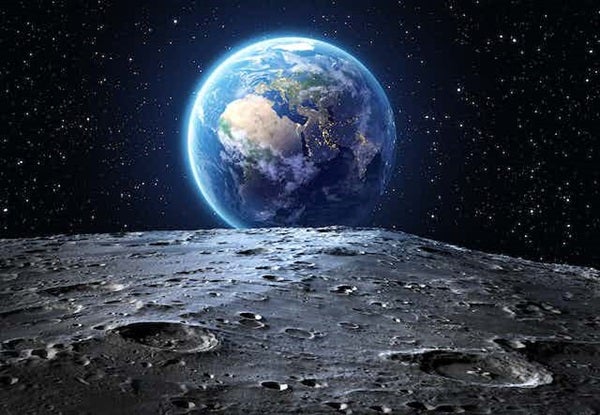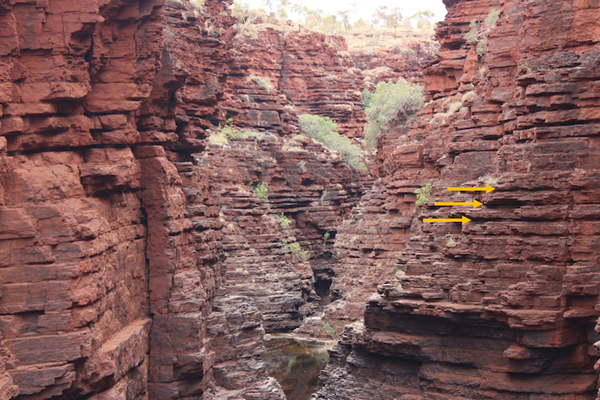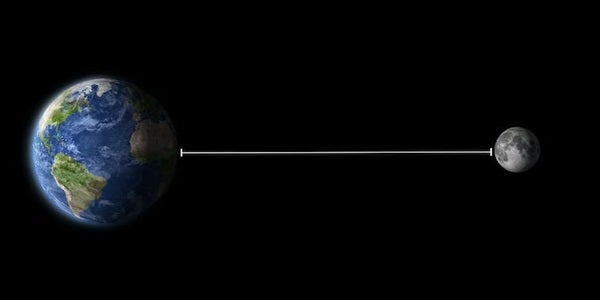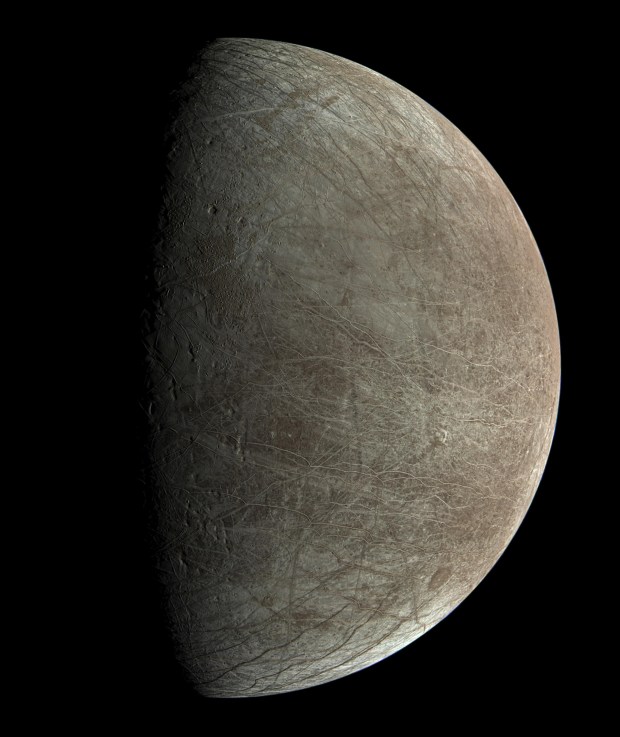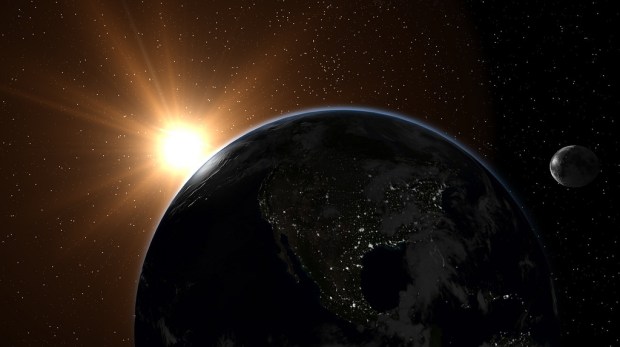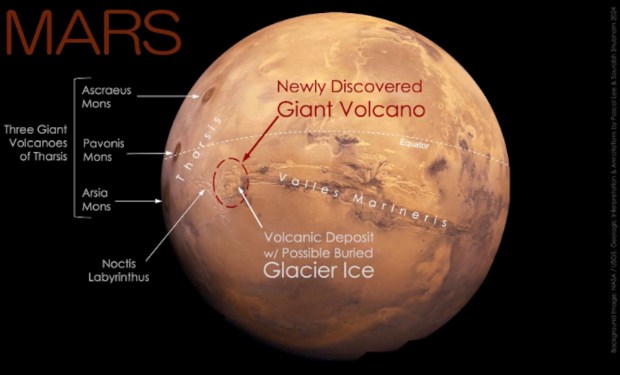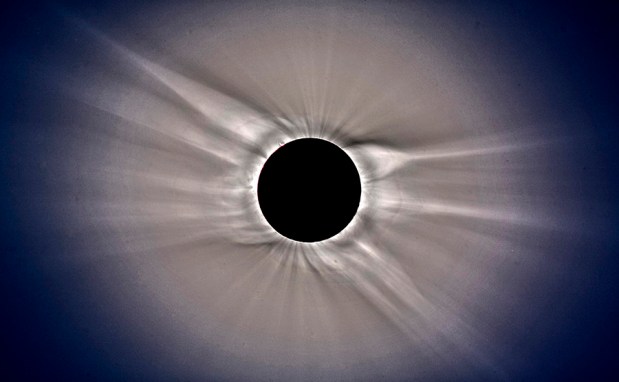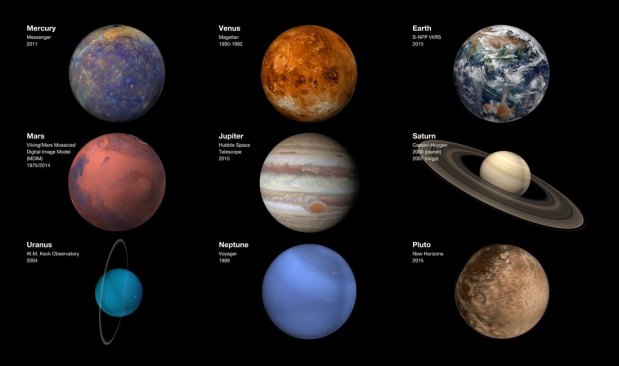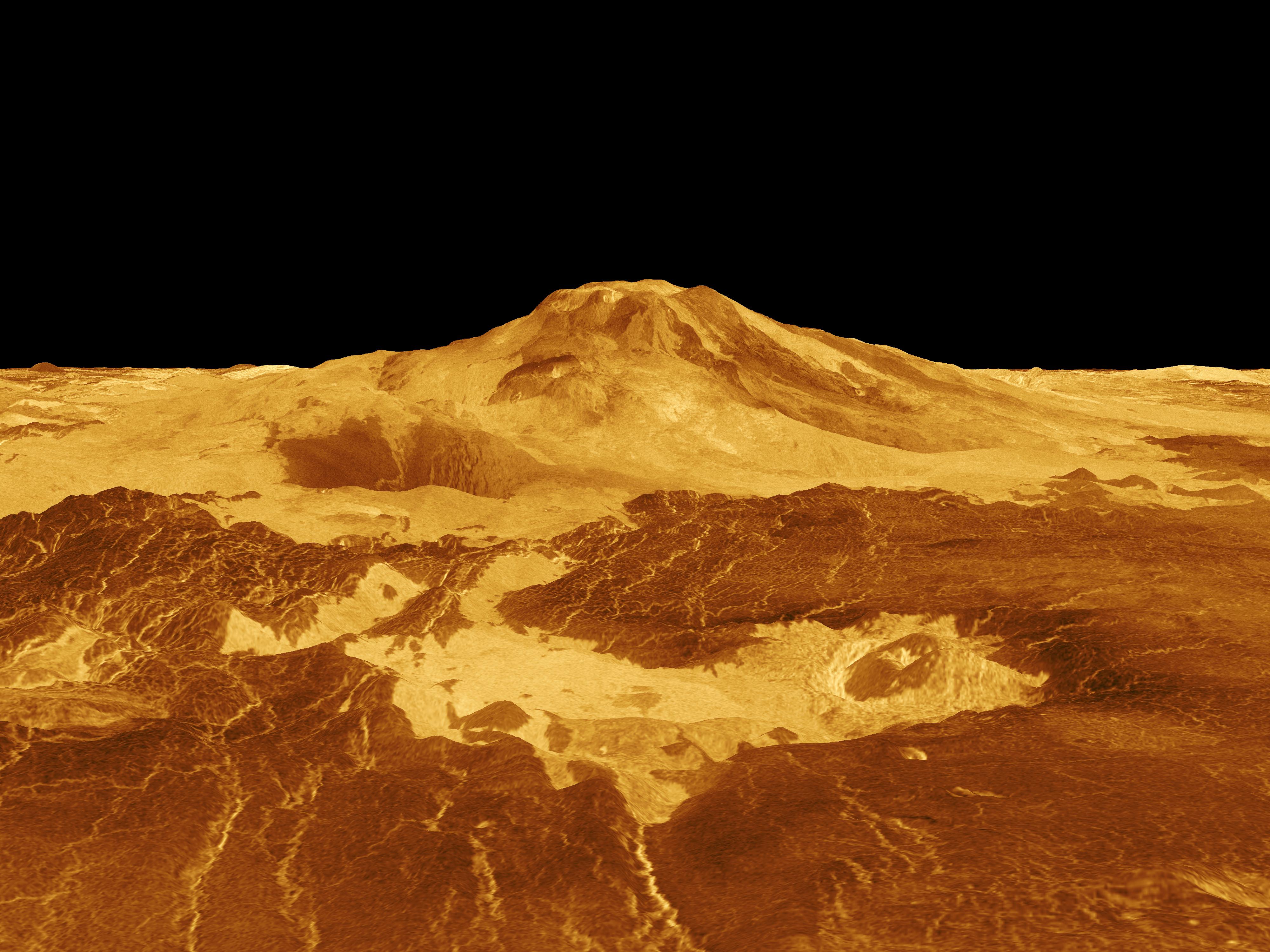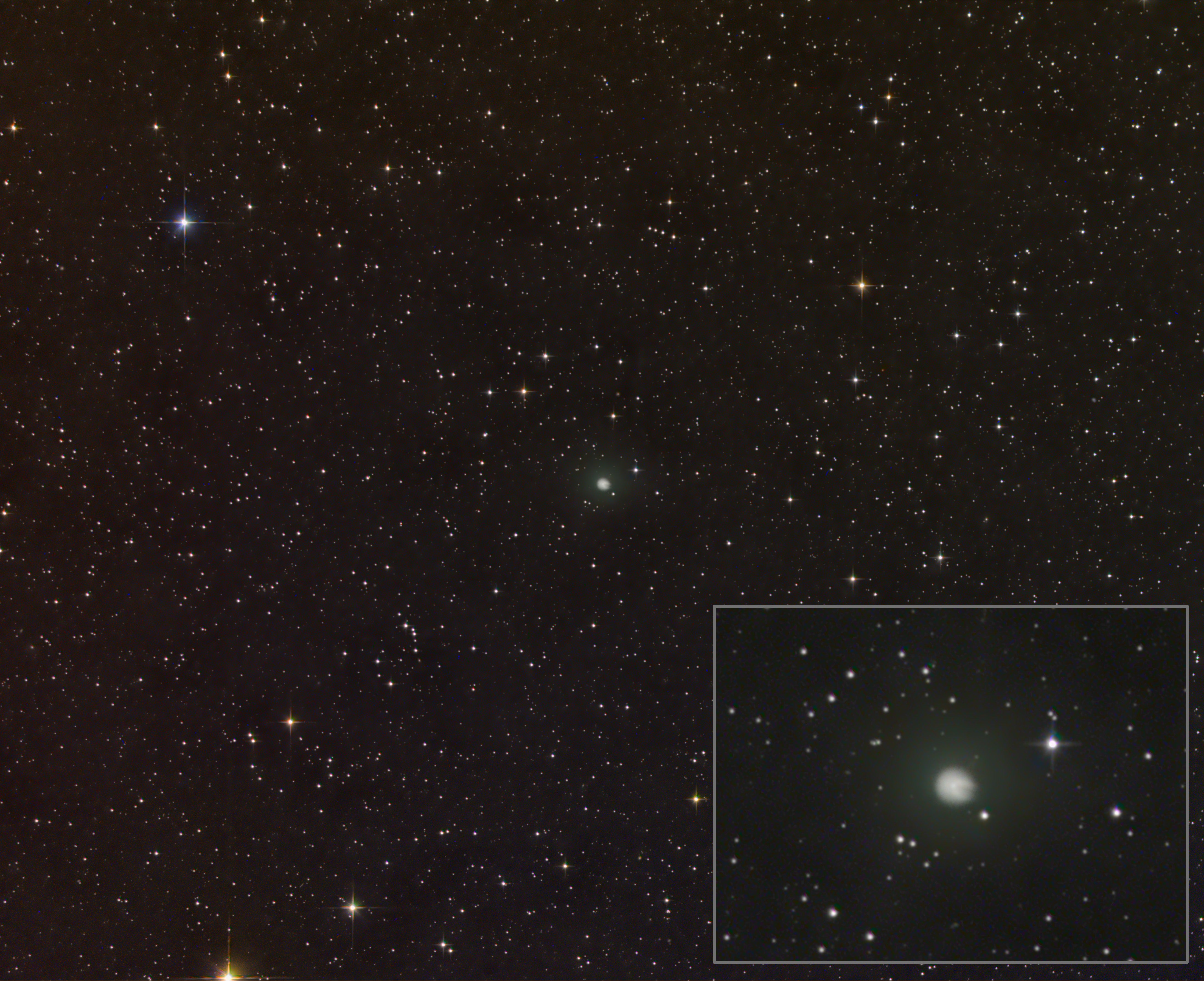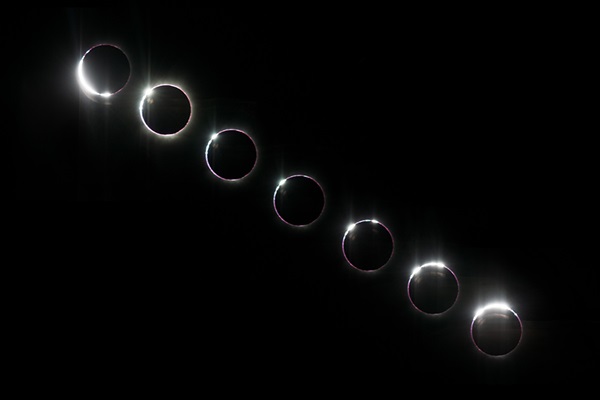Looking up at the Moon in the night sky, you would never imagine that it is slowly moving away from Earth. But we know otherwise. In 1969, NASA’s Apollo missions installed reflective panels on the Moon. These have shown that the Moon is currently moving 3.8 cm away from Earth every year.
If we take the Moon’s current rate of recession and project it back in time, we end up with a collision between Earth and the Moon around 1.5 billion years ago. However, the Moon was formed around 4.5 billion years ago, meaning that the current recession rate is a poor guide for the past.
Along with our fellow researchers from Utrecht University and the University of Geneva, we have been using a combination of techniques to try and gain information on our solar system’s distant past.
We recently discovered the perfect place to uncover the long-term history of our receding Moon. And it’s not from studying the Moon itself, but from reading signals in ancient layers of rock on Earth.
Reading between the layers
In the beautiful Karijini National Park in western Australia, some gorges cut through 2.5 billion year old, rhythmically layered sediments. These sediments are banded iron formations, comprising distinctive layers of iron and silica-rich minerals once widely deposited on the ocean floor and now found on the oldest parts of Earth’s crust.
Cliff exposures at Joffre Falls show how layers of reddish-brown iron formation just under a meter thick are alternated, at regular intervals, by darker, thinner horizons.
The darker intervals are composed of a softer type of rock which is more susceptible to erosion. A closer look at the outcrops reveals the presence of an additionally regular, smaller-scale variation. Rock surfaces, which have been polished by seasonal river water running through the gorge, uncover a pattern of alternating white, reddish and blueish-gray layers.
In 1972, Australian geologist A.F. Trendall raised the question about the origin of the different scales of cyclical, recurrent patterns visible in these ancient rock layers. He suggested that the patterns might be related to past variations in climate induced by the so-called “Milankovitch cycles.”
Cyclical climate changes
The Milankovitch cycles describe how small, periodic changes in the shape of Earth’s orbit and the orientation of its axis influence the distribution of sunlight received by Earth over spans of years.
Right now, the dominant Milankovitch cycles change every 400,000 years, 100,000 years, 41,000 years and 21,000 years. These variations exert a strong control on our climate over long time periods.
Key examples of the influence of Milankovitch climate forcing in the past are the occurrence of extreme cold or warm periods, as well as wetter or dryer regional climate conditions.
These climate changes have significantly altered the conditions at Earth’s surface, such as the size of lakes. They are the explanation for the periodic greening of the Saharan desert and low levels of oxygen in the deep ocean. Milankovitch cycles have also influenced the migration and evolution of flora and fauna including our own species.
And the signatures of these changes can be read through cyclical changes in sedimentary rocks.
Recorded wobbles
The distance between Earth and the Moon is directly related to the frequency of one of the Milankovitch cycles — the climatic precession cycle. This cycle arises from the precessional motion (wobble) or changing orientation of Earth’s spin axis over time. This cycle currently has a duration of approximately 21,000 years, but this period would have been shorter in the past when the Moon was closer to Earth.
This means that if we can first find Milankovitch cycles in old sediments and then find a signal of Earth’s wobble and establish its period, we can estimate the distance between Earth and the Moon at the time the sediments were deposited.
Our previous research showed that Milankovitch cycles may be preserved in an ancient banded iron formation in South Africa, thus supporting Trendall’s theory.
The banded iron formations in Australia were probably deposited in the same ocean as the South African rocks, around 2.5 billion years ago. However, the cyclic variations in the Australian rocks are better exposed, allowing us to study the variations at much higher resolution.
Our analysis of the Australian banded iron formation showed that the rocks contained multiple scales of cyclical variations which approximately repeat at 10 and 85 cm intervals. On combining these thicknesses with the rate at which the sediments were deposited, we found that these cyclical variations occurred approximately every 11,000 years and 100,000 years.
Therefore, our analysis suggested that the 11,000 cycle observed in the rocks is likely related to the climatic precession cycle, having a much shorter period than the current ~21,000 years. We then used this precession signal to calculate the distance between Earth and the Moon 2.46 billion years ago.
We found that the Moon was around 37,000 miles (60,000 kilometers) closer to Earth then (that distance is about 1.5 times the circumference of Earth). This would make the length of a day much shorter than it is now, at roughly 17 hours rather than the current 24 hours.
Understanding solar system dynamics
Research in astronomy has provided models for the formation of our solar system, and observations of current conditions.
Our study and some research by others represents one of the only methods to obtain real data on the evolution of our solar system, and will be crucial for future models of the Earth-Moon system.
It’s quite amazing that past solar system dynamics can be determined from small variations in ancient sedimentary rocks. However, one important data point doesn’t give us a full understanding of the evolution of the Earth-Moon system.
We now need other reliable data and new modelling approaches to trace the evolution of the Moon through time. And our research team has already begun the hunt for the next suite of rocks that can help us uncover more clues about the history of the solar system.![]()
Joshua Davies, Professor, Sciences de la Terre et de l’atmosphère, Université du Québec à Montréal (UQAM) and Margriet Lantink, Postdoctoral Research Associate, Department of Geoscience, University of Wisconsin-Madison
This article is republished from The Conversation under a Creative Commons license. Read the original article.

